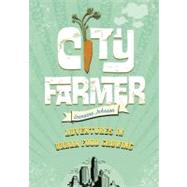
| Introduction: Bringing Dinner Home | p. 1 |
| Sowing the City, Reaping the Benefits | p. 9 |
| Embracing a Food-growing Ethic | p. 31 |
| Productive Possibility | p. 47 |
| Harvesting Space | p. 67 |
| Rethinking Convention: Finding Soil and Sites | p. 91 |
| Lessons of Care: Food Gardens as Nurturing Hubs | p. 119 |
| People Power: Growing Together in Community Gardens | p. 131 |
| Rogues on a Mission: Guerrilla Gardening and Foraging | p. 155 |
| What the Cluck?: Backyard Chickens | p. 179 |
| The Edible City | p. 203 |
| Epilogue: Adventures in Possibility | p. 215 |
| Resources | |
| A Selected List of Urban Farms and Edible Demonstration Gardens | p. 221 |
| A Selected List of Urban Agriculture and Food-related Organizations | p. 229 |
| A Selected List of Books | p. 233 |
| Acknowledgments | p. 243 |
| Index | p. 245 |
| Table of Contents provided by Ingram. All Rights Reserved. |
The New copy of this book will include any supplemental materials advertised. Please check the title of the book to determine if it should include any access cards, study guides, lab manuals, CDs, etc.
The Used, Rental and eBook copies of this book are not guaranteed to include any supplemental materials. Typically, only the book itself is included. This is true even if the title states it includes any access cards, study guides, lab manuals, CDs, etc.